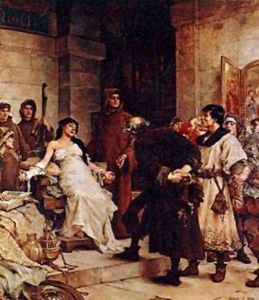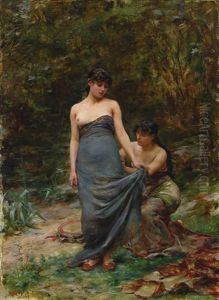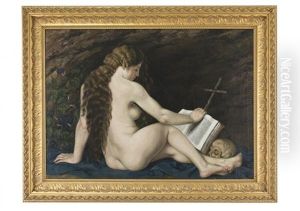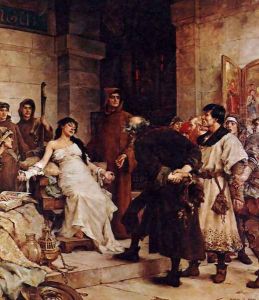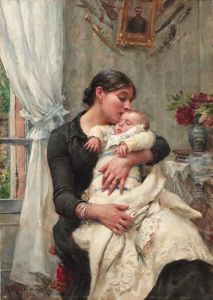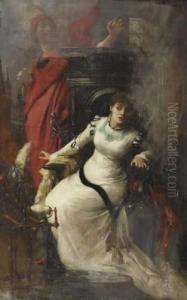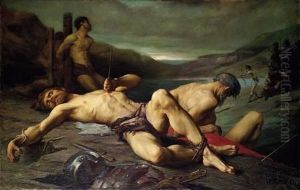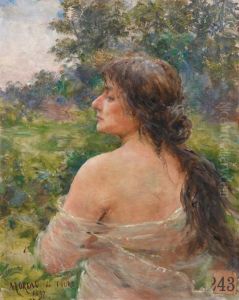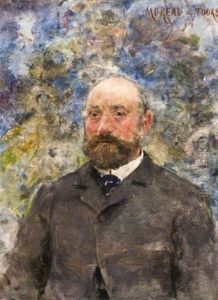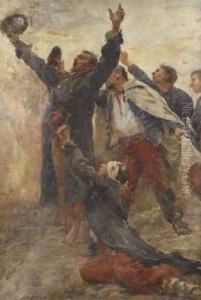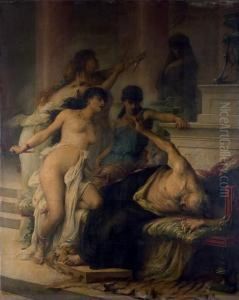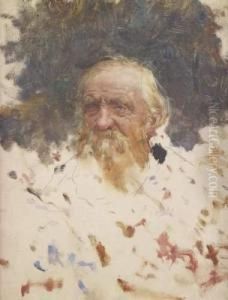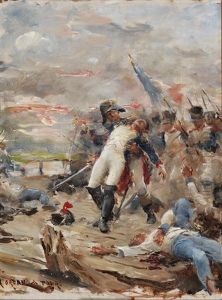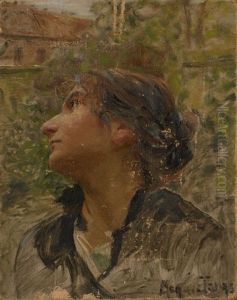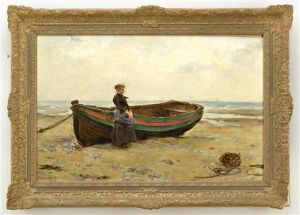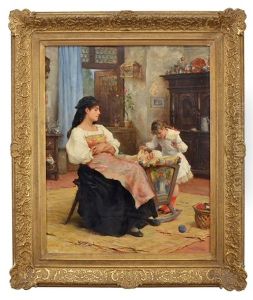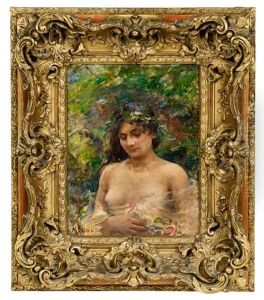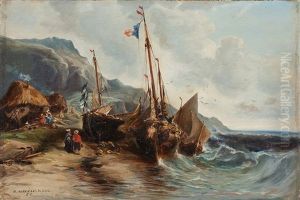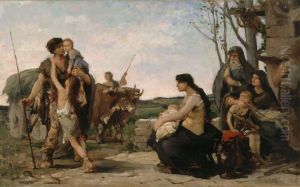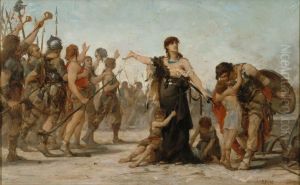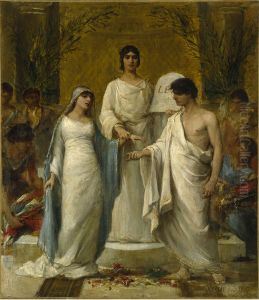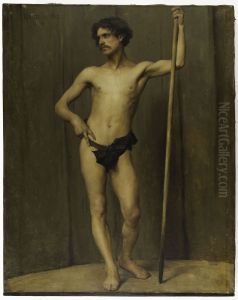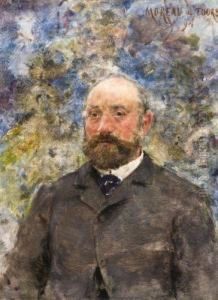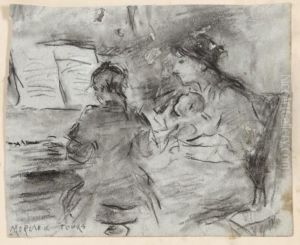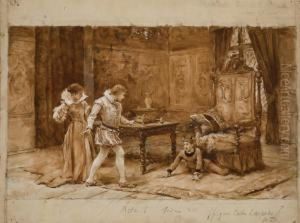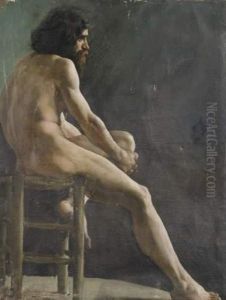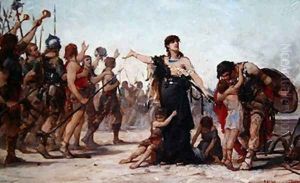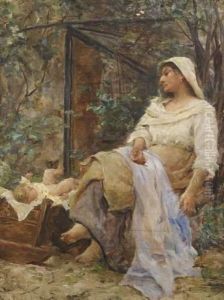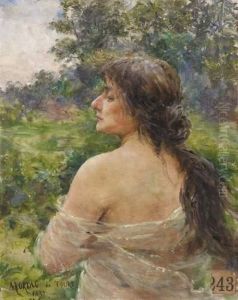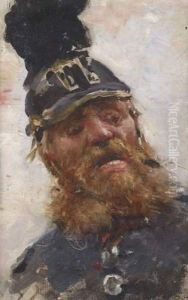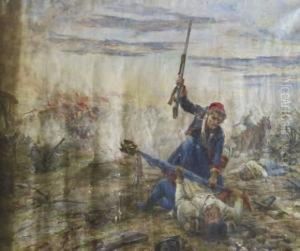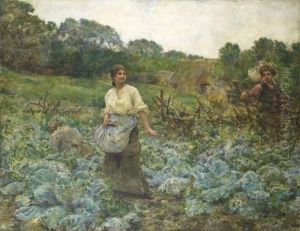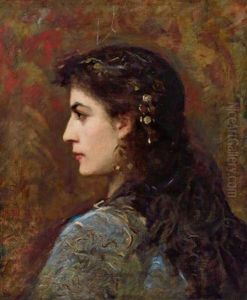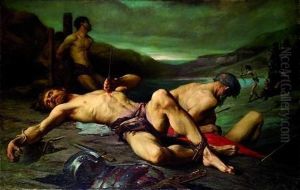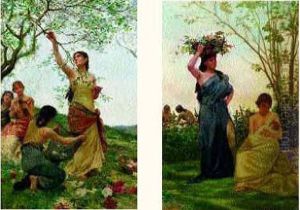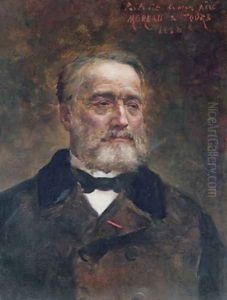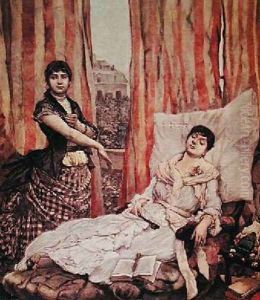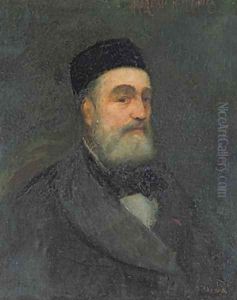Georges Moreau de Tours Paintings
Georges Moreau de Tours was a French historical painter born in Ivry-sur-Seine, France, in 1848. He was the son of the noted history painter Isidore Moreau de Tours and received his early instruction in art from his father. Later, he entered the École des Beaux-Arts in Paris, where he was a student of Alexandre Cabanel, a prominent academic artist of the time known for his classical and mythological scenes.
Throughout his career, Georges Moreau de Tours specialized in painting historical and genre scenes, often inspired by literature and history, which were highly popular during the 19th century. His works were characterized by a meticulous approach to detail and a keen interest in capturing the ambiance of the periods he depicted. He exhibited regularly at the Paris Salon, the official art exhibition of the Académie des Beaux-Arts in Paris, receiving several accolades for his work.
Moreau de Tours enjoyed considerable success during his lifetime, with his paintings appealing to the tastes of the bourgeois and aristocratic patrons of the era. His works are imbued with a sense of romanticism and often portray dramatic moments, which resonated with the sentimental and nostalgic inclinations of the time.
In addition to historical paintings, Moreau de Tours also produced a number of orientalist works, a genre that was fashionable among European artists in the 19th century. These paintings typically featured scenes from the Middle East and North Africa, reflecting Western fascination with these regions.
Despite his success during his lifetime, Georges Moreau de Tours' reputation did not endure into the modern era as the art world's tastes shifted towards Impressionism and post-Impressionism. Nevertheless, his paintings can still be found in various museums and private collections, serving as examples of the academic and historical painting that was prevalent in France during the latter half of the 19th century.
Georges Moreau de Tours passed away in 1901, leaving behind a body of work that captures the essence of 19th-century academic art and the French public's interest in historical and exotic subjects.
